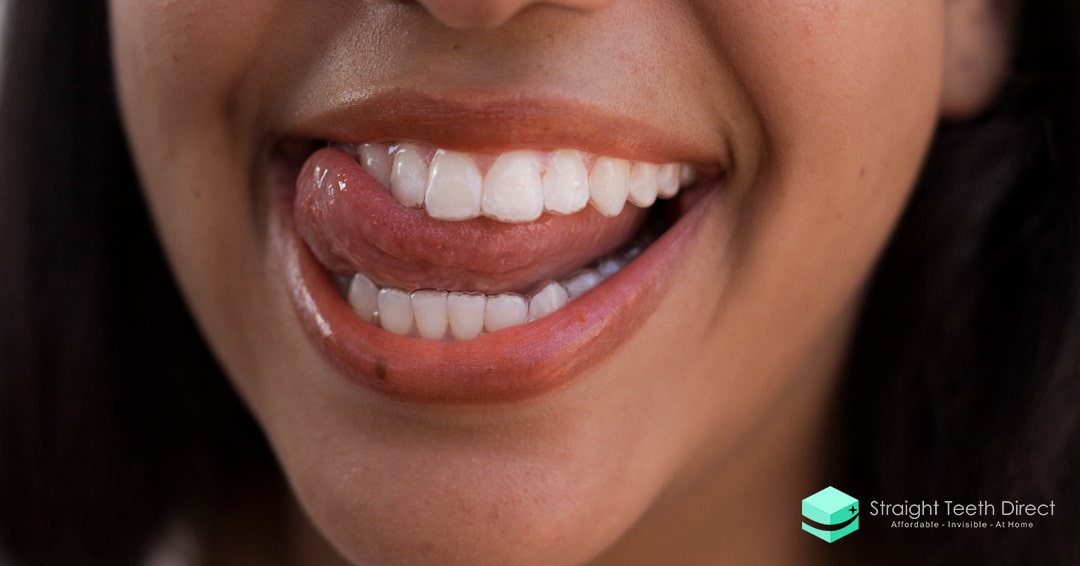
Aligner lisp – Myth or reality?

We are busier than ever and we always need to be at our best. Many of us rely on our presentation skills to be able to do our job whether in person or on the phone, to make sure we can close deals, influence colleagues and be respected in the workplace. The last thing we want to do is draw attention to ourselves in less than a positive way and many people are concerned about having an aligner lisp. Speaking clearly is important to us and it’s something everyone considers when choosing the right type of treatment to straighten their teeth.
#1 What causes an aligner lisp
A lisp is caused by a variation in “s” sounds when they sound like “th”.
This is largely caused by errors in tongue placement. When we speak everyday we have been conditioned to move our tongue and lips unconsciously to the places needed to generate the chosen sounds. When we have some changes in the mouth such as new brace or aligner, then we need to simply adapt how we sometimes form those sounds. This then helps speaking more clearly.
The good news is our mouths are highly adaptable, people who are missing teeth or even wearing dentures are able to adapt to speak more clearly as we can adapt our lip and tongue positions to get better sounds. This is the whole premise of speech therapy.
#2 Effect of different braces on speech
When choosing to straighten teeth there are largely 3 types of brace.
1. Discomfort caused by traditional fixed braces
Fixed braces on the front of the teeth (Labial braces): As these are on the front of the teeth the path of the tongue isn’t affected so it can move and place freely but the lips are affected, they can get cut and rub painfully on the brace brackets. This can be extremely uncomfortable and make it difficult to close your mouth. This can also cause more saliva to be produced and be painful as the lips become more dry as well. If you were to eat something crunchy then breaking a bracket could make the situation worse if a wire came loose and then cut your cheek more. So overall not the greatest for comfort.
2. Lisp caused by lingual braces
Fixed braces on the back of the teeth (Lingual braces: As these are on the back of the teeth, the tongue can have a really tough time. It is normal for the first month to be extremely painful as the tongue has no place to go and just gets rubbed / cut repeatedly. This can cause very sore spots that make it difficult to speak. Also “s” and “t” sounds can be challenging as the brackets on the back of the teeth directly interfere with the tongue’s normal position. Even with this disturbance with the right practice and enunciation your speech can be perfectly clear.
#3 Is an aligner lisp inevitable with aligners
Aligners are clear plastic trays that fit tightly over your teeth, by definition as your teeth are covered the tongue needs to adapt slightly as it’s in a slightly different position. The aligners are typically 0.5mm – 0.75mm thick so there can be a slight lisp that is usually more noticeable to you than anyone else, with practice this reduces as the tongue and mouth adapts to the new position needed. The beauty and advantage of the aligners is that you are able to remove them, so if you had an important meeting it can be removed and you can focus on the important presentation or call, and then pop them back in afterwards. The lack of metal brackets also means your lips and tongue don’t get sore or painful to the extent that happens with the lingual or labial braces. Overall this means you have a much smoother time with aligners.
Every case is different and some users report not having a lisp at all and in fact nobody noticing they have been wearing aligners, some other notice a slight aligner lisp during the first few hours and other have a lisp for the first few days, but it always tend to soften after the first week.
If you’re worried to get an aligner lisp or not sure how they look when you talk with them in make sure to check videos posted by Straight Teeth Direct users.

Not quite sure yet?
Fill in your email and we'll send you more details!















